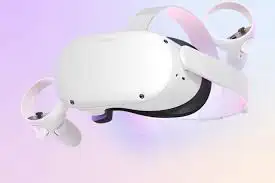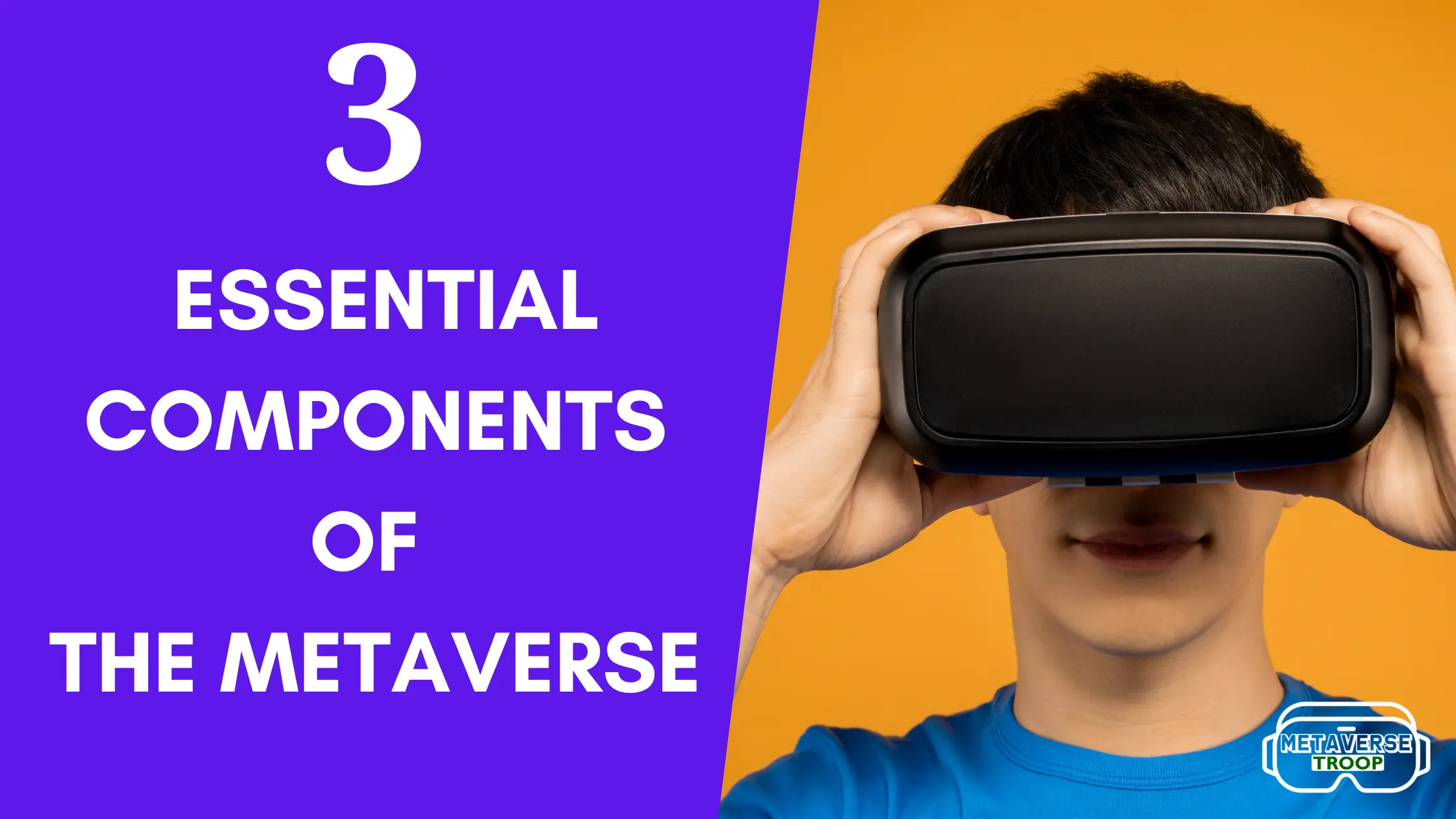Metaverse is seen as the digital transformation of every aspect of our physical lives. Everyone sees metaverse as an immersive internet that is gigantic, unified, persistent and have shared virtual environment. To facilitate all of these there are 3 essential components of the metaverse.
This post divides the essential components of the metaverse into three types. It will discuss all the 3 essential components of the metaverse in detail. I will aso list all the subtypes of the essential components of the metaverse but these will be discussed in an upcoming post.
Finally, it will conclude with the issues and challenges with all the components of metaverse and some solution to mitigate these issues and challenges.
ESSENTIAL COMPONENTS OF THE METAVERSE
In this section, first I will discuss the hardware components, software components and contents components that all work together to provide an immersive experience in the metaverse.

HARDWARE COMPONENTS OF THE METAVERSE
Hardware is one of the important essential components of the metaverse. It is the only basis of human interactivity in the metaverse. Hardware component of the metaverse is enhanced by technological advancement but requires improvement.
The most essential component of the metaverse is a Head-Mounted Display (HMD) as of now. Critical factors essential for any hardware component of the metaverse are
- Resolution
- Field of View
- Latency
There are many challenges and problems that persist in hardware essential components of the metaverse. Latency is the most important one.
In this section, I will review the types of hardware essential components of the metaverse briefly.
TYPES OF HARDWARE COMPONENTS OF THE METAVERSE

As of now, there are 5 types of hardware essential components of the metaverse. They are listed below.
- Head-Mounted Displays(HMD)
- Hand-Based Input Device
- Non Hand-Based Input Device
- Motion Input Device
Head-Mounted Displays (HMD) is the most basic and essential input tool to experience immersiveness of the metaverse. Modern HMD like Occulus Rift, HTC Vive, etc can track position and orientation of the users. But HMD at present are bulky, expensive and short battery life.
Hand-Based Input Device includes haptic gloves. Prototype of Haptic Gloves by Meta was introduced recently. With haptic gloves you can feel and hold things. But, the texture of the object cant be felt and it is under development.
Non Hand-based Input Device include devices and sensors that track your eye, head, take voice input and make you feel air, heat and cold. Razer introduced HyperSense Suit by which you can feel the sensation like hitting, cutting, etc., in a game. I will review Razer HyperSense Suit in the coming post.
Motion Input Device is used in various forms to give realism in the metaverse. These hardware essential components of the metaverse use the physical sense of space or gravity, body tracking and treadmill are used to provide accurate motion information.
SOFTWARE COMPONENTS OF THE METAVERSE
The input taken from hardware essential components of the metaverse needed to be processed by the software essential components of the metaverse. There are many models created by the software that are essential to be part of this virtual environment.
Vision-based models estimate human poses, recognize hand and face gestures. To predict the gaze, iris, facial contour and 3D gaze prediction are used.
TYPES OF SOFTWARE COMPONENTS OF THE METAVERSE
There are 5 types of software essential components of the metaverse. They are listed below.
- Scene and Object Recognition
- Scene and Object Generation
- Sound and Speech Recognition
- Sound and Speech Synthesis
- Motion Rendering
Object Recognition is done by software to recognize the size, position, shape, brightness and color of objects from distance as you do. In scene recognition, the software recognizes what state the current scene is in and what configurations and components it has.
Sound and Speech Recognition and Synthesis helps to understand surroundings and communicate with other avatars in the metaverse. The software component of the metaverse needs to understand noise between surrounding noise and one’s own voice without noise.
Human body language, facial expression, hand movements, etc are methods to understand what another person is saying. To make the metaverse realistic all these components need to be rendered by the software essential components of the metaverse.
CONTENT COMPONENTS OF THE METAVERSE
Content is the fundamental component of the metaverse, It maintains the metaverse and is used to provide an immersive experience through well-organized stories and user-created events. Content component of the metaverse contains story reality, immersive experience, and conceptual completeness are important.
TYPES OF CONTENT COMPONENTS OF THE METAVERSE
There are 6 types of content component of the metaverse. They are listed below
- Multimodal Content Representation
- Multimoda Entity Linking and Expansion
- Scenario Generation
- Scenario Population
- Scenario Evaluation
- Agenta Persona Modeling
Multimodal Content are the multimedia contents (images, videos, test etc) that are generated by the user through their avatar. Multimodal content enriches the content by adding information from the data collected from the avatars.
The Metaverse needs a different persona model or each avatar needs to have a different personality. This persona model should express various multimodal expressions like gestures and facial expressions as well as conversations.
Entities and their relationship in the metaverse is used to organize events. These events are combined to form a scenario. Scenario generation, scenario population and scenario evaluation are important types of content essential components of the metaverse.
ISSUES AND CHALLENGES OF COMPONENTS OF THE METAVERSE AND ITS SOLUTION

In order to give the user a sense of a virtual immersive world, a light head-mounted display (HMD) and physical device that mimics our sense organ is used. But these devices are at their infant stage and they are going to evolve a lot.
In terms of software essential components of the metaverse, there is a delay in providing high resolution images. This delay produces dizziness and motion sickness due to sensory confusion. So, there is a need to reduce delay and inverse rendering process. In addition, the field of view is limited to most of HMD.
There is a large technical gap in hardware and software performance. Contents are essential for sustainability of the metaverse. There must be a plot that considers user interaction in the virtual environments. Only user generated content is not essential but content built by professionals is also needed.
ISSUES RELATED WITH HARDWARE COMPONENTS OF THE METAVERSE
In this section, I will list some of the issues related with hardware essential components of the metaverse and its solution as of now.
Wearing HMD may cause the following issues
- Motion Sickness
- Blinking
- Physical Fatigue, movement injuries and hygiene issues.
In order to reduce the side effects, the following solution may be implemnetd.
- Postural Stability
- Adaptive optimization
- Physiological measurement method.
ISSUES RELATED WITH SOFTWARE COMPONENTS OF THE METAVERSE
Latency of processing data taken from hardware components is the main issue. In order to process large amounts of real-time data, fast rendering and data analysis is used. To process a 360-degree field of view the speed of image processing needs to be exponential.
Therefore, it is necessary to reduce the delay time through expected tracking and measurement in the time of rendering the object.
ISSUES RELATED WITH CONTENT COMPONENTS OF THE METAVERSE
The users of metaverse should be given to decide what type of scenario they want. Whether they want
- Simple, concise summary format
- Long , complex plots of events.
The depth and density of the scenario should be determined using modal and density transforms. Methods like clustering, time-dependent index, and visual analysis methods are used for scenario construction.
CONCLUSION
In this post, I have comprehensively discussed the 3 necessary essential components of the metaverse-hardware, software and content. In addition, I have listed the types of each component of the metaverse. The detailed discussion on each and every type will be done in the upcoming posts.
Hardware essential components of the metaverse are essential for users to feel the immersiveness of the metaverse. Software essential components of the metaverse take input from the hardware components and process it to give a persistent virtual world to you. User generated contents and in-built metaverse contents give meaning and storyline to the metaverse.
There are many challenges to the essential components of the metaverse as of now. Day by day much more advancement is taking place in this field. Hope one day the essential components of the metaverse will be developed to give us the real meaning of metaverse where physical and virtual weld co-exist.
